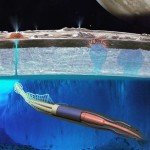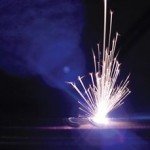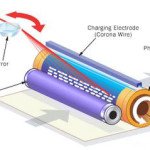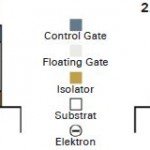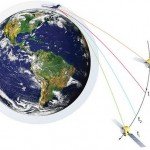History of Nuclear Energy and The First Documented Nuclear Accident
The very first experimental nuclear power apparatus was introduced in 1942 by Enrico Fermi and his pupils at the University of Chicago. A product of military service propulsion studies, atomic energy appeared in the United States Of America as a commercial power alternative in the 1950s. A Pennsylvania utility, Duquesne Light, made the first professional nuclear power reactor at Shippingport, Pennsylvania, in 1954.
 Nuclear power was commercially appealing simply because it provided the possibility to produce electricity without worrying about the air contamination that accompanied the burning of fossil fuels. Waste material volumes are comparably scaled: Fossil fuel systems produce large numbers of metric tons of gaseous, particulate, and solid wastes.
Nuclear power was commercially appealing simply because it provided the possibility to produce electricity without worrying about the air contamination that accompanied the burning of fossil fuels. Waste material volumes are comparably scaled: Fossil fuel systems produce large numbers of metric tons of gaseous, particulate, and solid wastes.
In contrast, as stated by the Nuclear Energy Institute (NEI), boiling water atomic energy reactors produce around 50 and 150 metric tons of low-level waste annually, while pressurized water reactors produce between 20 and 75 metric tons. The amount and mass of the waste can be further minimized by 95% by reprocessing the spent rods. Currently, 33 countries around the globe host 444 working commercial nuclear energy-fueled electric generating facilities. All those facilities have cumulatively recorded over 10,000 years of operation. The United States is still the largest single manufacturer of nuclear energy on the planet, with 104 plants that supply over 800 billion kilowatt (kW) hours. In 1998, those plants provided 674 billion kilowatt (kW) hours.
The gains came as a result of enhancing hardware, processes, and overall effectiveness —not a single new nuclear plant was made over that period. The improved effectiveness and capability of the nuclear fleet indicates the industry added the equivalent of 26 new 1,000 MW reactors to the power grid. France has the next biggest number of nuclear power plants with 59, and three are under construction. Japan now has 55 nuclear power plants, followed by 35 in the United Kingdom. Russia follows with 29, and then Germany with 20. China at the moment has seven working plants and 132 more scheduled by 2020. Around 80% of France’s electricity needs is fulfilled by nuclear energy, while The United Kingdom uses nuclear energy to produce 23% of its electrical power. Other nations with noticeable nuclear power include: Spain, 29%; Germany and Finland, 32%; Sweden, 44%; and Belgium, 58%.
Nuclear Accident
The first documented commercial nuclear power plant accident took place in the United Kingdom at the Windscale power plant on October 10, 1957 when fire damaged the core of a plutonium making reactor sending clouds of radioactivity into the environment, while the chemical accident could have caused deaths, none were ever revealed.
The 1979 event at Three Mile Island in the United States happened because malfunctioning instrumentation gave fake readings for the reactor environment. That led to a series of hardware problems and human error. Because of this, the reactor core was affected and underwent a partial melt. Radioactive liquid was released from the core and carefully confined within the containment building structure. Very little radiation was released into the atmosphere, and no health impacts were reported.
The Three Mile Island incident underscores the relative safety of nuclear power plants. The facility’s safety equipment worked as designed, avoiding injury to humans, animals, or the planet. The accident resulted in greater procedures, instrumentation, and safety systems, indicating nuclear reactor power plants in the US today are substantially safer than they were in the past. Three Mile Island’s Unit One continues to function with an impeccable record. The worst nuclear power plant disaster of all time happened when the Chernobyl reactor in the Ukraine experienced a heat explosion. If this kind of explosion were to have occurred in a Western nuclear power plant, the explosion would have been safely contained. All Western plants are necessary to have a containment structure: a solid structure of steel-reinforced concrete that encapsulates the nuclear reactor vessel.
The Chernobyl plant did not have this essential safety structure. The explosion blew the top off of the reactor building, spewing radiation and reactor core pieces into the air. The graphite reactor burned ferociously—which would not have happened if the facility had a containment building from which oxygen could be excluded. The design of the Chernobyl plant was low quality in other ways as well. Unlike the Chernobyl reactor, Western power plant nuclear reactors are prepared to have negative energy coefficients of reactivity that make such uncontrolled accidents impossible: When control of the reaction is lost, the reaction slows down rather than speeds up.
The problematic Chernobyl nuclear power plant would never have been approved to operate in the United States or any other Western region. The accident that occurred at Chernobyl could not happen elsewhere. The conditions surrounding the Chernobyl accident were in many ways the worst imaginable, with an uncovered reactor core and an open structure. 31 plant workers and firemen died immediately from radiation exposure as a result of the Chernobyl accident.


